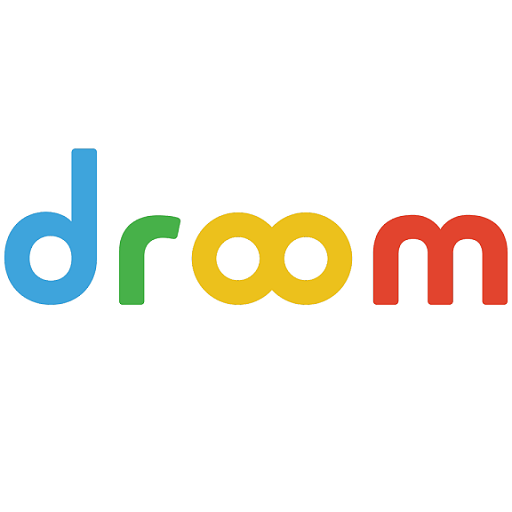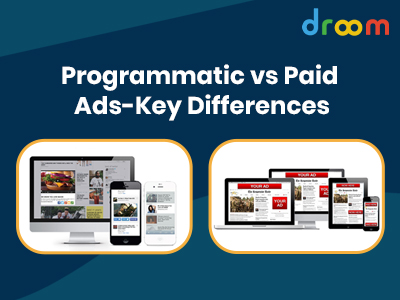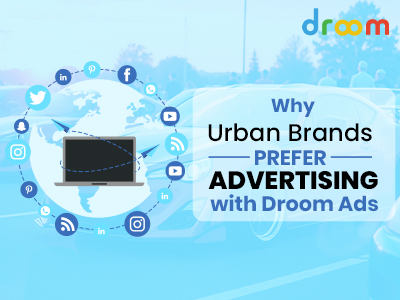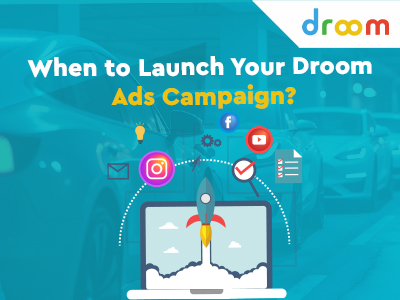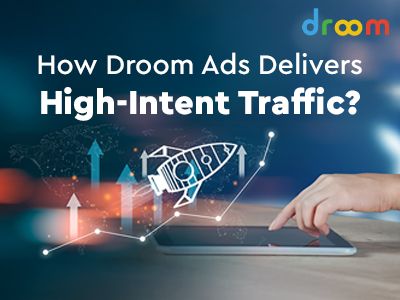Did you know, as per Statista reports, spending on native advertising is expected to cross $400 billion globally? This is how new-age brands are communicating with their customers. Especially, in the case of sellers on e-commerce platforms, where every scroll is a potential sale, native advertisement comes across the user’s journey without breaking their experience.
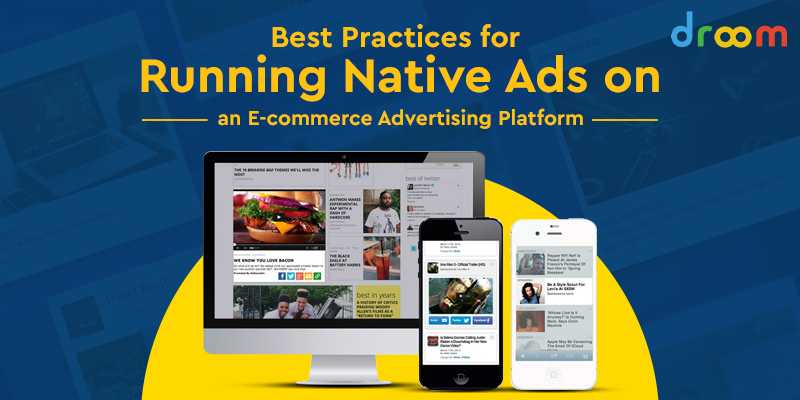
And, the notable point is that native ads are not just for increasing reach and visibility. When placed strategically, native ads don’t just blend in with existing content but also perform well and generate potential leads.
In fact, if we talk in numbers, native ads generate 53% more views than traditional display ads. Every ad format has its unique values and its own way to fit in well. For sellers on e-commerce, it’s never recommended to hit a shot in the dark, as it will just drain your budget. Success lies in following platform-specific strategies, understanding buyer intent, and delivering value at every touchpoint. It’s necessary to learn the strategic moves to make the most out of your native ads.
This guide is designed to aid enterprises by explaining the importance of native ads in modern e-commerce ecosystems. Along with this, we will explore actionable best practices to optimize native ad performance. Let’s explore how to do it right.
What is Native Advertising?
Native advertising represents content that looks and feels like the material already on the page but carries promotional intent. Traditional display ads used to improve presence as they announce themselves boldly. On the other hand, native ads whisper rather than shout and create subtle yet effective marketing moments by blending into the content.
Today’s customers are quick to skip anything that looks overly promotional. Bold, intrusive ad formats often backfire, especially in e-commerce environments where attention is scarce and trust is everything. The importance of native advertising stems from this changing consumer behavior. By blending effectively into the user experience, native ads prioritize relevance over disruption. They offer value first through content, context, or recommendations, and introduce selling as a natural next step, not an abrupt interruption.
Key characteristics of effective native advertising include:
- Content that matches platform aesthetics
- Value-driven messaging that educates or entertains
- Easy integration with user experience
- Clear but subtle promotional disclosure
- Audience-specific targeting and personalization
Why Is Native Advertising Important for E-commerce Success?
A. Enhanced User Experience: Benefits of native ads include significant improvements to the overall user experience. Rather than interrupting the customer journey, well-executed native ad campaigns ease the path to purchase by addressing information gaps at crucial decision points. E-commerce online advertising platforms benefit from maintaining engaged users who spend more time exploring products and services. Meanwhile, native ads contribute to this engagement by providing contextually relevant information that supports purchasing decisions.
B. Improved Targeting Precision: E-commerce platforms collect vast amounts of user data, including browsing patterns, purchase history, and demographic information. Native advertising uses this data to deliver highly targeted content that resonates with specific audience requirements exactly when they look for the same.
Effective targeting strategies encompass:
- Behavioral targeting based on past interactions
- Demographic segmentation for personalized messaging
- Geographic targeting for location-specific offers
- Interest-based content delivery aligned with user preferences
- Purchase intent signals for optimal timing
C. Increased Conversion Rates: Native ads consistently outperform traditional formats in conversion metrics, and the businesses benefit when the prominent focus of an ad is getting leads or clicks. The non-intrusive nature of these native ads creates positive user sentiment and leads to higher click-through rates and better conversion performance.
“Industry data shows native ads generate click-through rates 8.8 times higher than traditional display advertising, with conversion rates improving by up to 25% compared to banner advertisements.”
Key Benefits of Native Ads for E-commerce Platforms
- Higher Engagement Rates: Spend on native continues to demonstrate a superior performance when compared to non-native ad formats in a variety of measures. The lack of a jarring transition to a platform’s content increases the likelihood that a user will stay engaged with promotional content for longer. This prolonged courtship allows ample time to communicate value propositions effectively and build a relationship with potential customers.
- Improved Brand Perception: The advantages of native ads are also seen in an increase in brand perception. When product placement offers real value, the user will begin to think of your brand as being helpful or an expert in the market. This positive association translates into increased trust, brand loyalty, and word-of-mouth recommendations.
- Better Targeting Capabilities: User data on e-commerce websites is rich, covering the browsing history, buying frequency, and user demographic information. This data is used in native ads on an e-commerce website to present the most precise, nuanced form of content to those who would convert. Ads with the right placement at the right time for the right audience make all the difference.
- Reduced Ad Fatigue: Traditional display advertising often suffers from banner blindness, where users unconsciously ignore promotional content. The benefit of native ads is that they circumvent this issue by presenting information in formats users actively seek. This approach maintains effectiveness even as users become more advertising-savvy.
When to Use Native Ads for Maximum Business Impact?
- Product Launches: Ideal for introducing new offerings through educational, benefit-led content instead of direct promotion.
- Brand Awareness: Effective for building credibility and recognition, especially in new or competitive markets.
- Complex Purchases: Best suited for high-involvement buying journeys where detailed, trust-building information is key.
- Crowded Markets: Helps brands stand out by showcasing thought leadership rather than battling on price or features.
Best Practices for Native Ad Execution on E-commerce Advertising Platform
1. Content Quality Standards
- Deliver authentic, user-centric value through education or problem-solving.
- Maintain accuracy and align tone with the platform’s native style.
- Use visuals and formatting that support clarity across all devices.
2. Platform-Specific Optimization
- Adapt content length and layout based on device usage trends.
- Tailor messaging to match platform-specific user demographics.
- Align creatives with user intent, whether discovery or decision-making.
3. Transparent Disclosure Practices
- Clearly label sponsored content to build transparency and trust.
- Ensure compliance with platform and regulatory guidelines.
- Use consistent disclosure language that doesn’t disrupt flow.
4. Performance Measurement
- Track time spent and content completion for engagement insights.
- Measure brand recall and sentiment shifts over time.
- Monitor lead quality and downstream conversion metrics.
Conclusion
Native advertising represents a fundamental shift from interruption-based marketing to value-driven engagement. The importance of native advertising continues growing as consumers become increasingly selective about content consumption and more resistant to traditional advertising formats.
For businesses seeking authentic customer engagement in competitive markets, online advertising platforms like Droom Ads offer comprehensive native advertising solutions that combine extensive reach with sophisticated targeting capabilities. With access to over 200 million annual traffic and high-quality demographics across India’s largest automobile enthusiast community, such specialized e-commerce advertising platforms provide the foundation for native advertising campaigns that drive meaningful business results while respecting user experience preferences.
Droom is an automobile e-commerce platform offering a 21st-century automotive buying experience online with its four value pillars including trust, selection, low price, and convenience second to none. It offers 250k+ vehicles online in 1,100 cities — both used and new. Droom deals in buying and selling cars, 2-wheelers, and other vehicles too. It is an AI and data science-driven platform designed with the best ecosystem tools. Here, we have a team of auto-experts and auto enthusiasts who are dedicated to covering every sphere of the auto industry by simplifying the procedure of buying and selling with Unified Droom Experience. To know more, click here.
